Address
304 North Cardinal
St. Dorchester Center, MA 02124
Work Hours
Monday to Friday: 7AM - 7PM
Weekend: 10AM - 5PM
Address
304 North Cardinal
St. Dorchester Center, MA 02124
Work Hours
Monday to Friday: 7AM - 7PM
Weekend: 10AM - 5PM
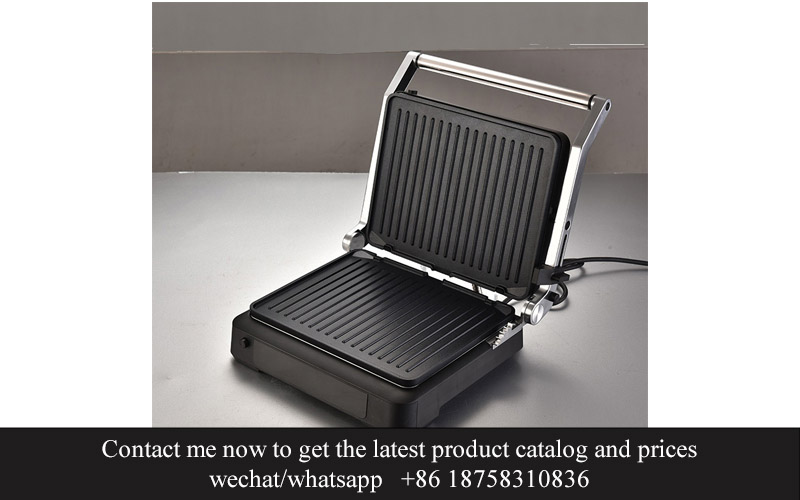
In the ever-evolving world of e-commerce, kitchen appliances have found a new frontier for innovation and market expansion. The digital marketplace, particularly platforms like Lazada and Shopee, has become a hub for suppliers to tap into a vast audience hungry for the latest and greatest in home gadgets. As we delve into the dynamics of this thriving industry, it’s clear that the future of kitchen appliances is not just about new products, but about how these innovations meet the needs and desires of modern consumers.
In recent years, the kitchen appliances industry has seen a remarkable shift towards online sales, with e-commerce platforms becoming the new frontier for consumers seeking the latest and greatest in kitchen technology. This surge in online kitchen appliance sales is not just a fleeting trend; it’s a testament to the changing landscape of consumer preferences and shopping habits.
The convenience of online shopping has revolutionized the way we purchase everyday items, and kitchen appliances are no exception. With just a few clicks, customers can now browse through a vast array of products, compare prices, and even read reviews from fellow shoppers, all from the comfort of their homes.
One of the key factors driving this rise is the increasing connectivity and accessibility of the internet. As more people gain access to high-speed internet, they are embracing the ease of online shopping. This accessibility has extended beyond urban centers to reach even the most remote locations, expanding the market for kitchen appliances exponentially.
The demand for kitchen appliances has also been bolstered by the growing popularity of home cooking and baking. With the rise of culinary influencers and cooking shows, there’s a renewed interest in culinary arts, and this has spurred a need for high-quality, innovative kitchen gadgets. From sous-vide machines to air fryers, consumers are eager to try out the latest kitchen gadgets that promise to simplify and enhance their cooking experiences.
Moreover, the e-commerce sector itself has evolved to cater to this demand. Platforms like Amazon, eBay, and now regional players like Lazada and Shopee, have become go-to destinations for a wide range of kitchen appliances. These platforms offer not just a vast inventory but also a seamless shopping experience, including easy payment options and reliable delivery services.
Lazada, for instance, has become a powerhouse in Southeast Asia, connecting millions of buyers and sellers across the region. Their user-friendly interface and robust search functionality make it easy for customers to find the kitchen appliances they need. Similarly, Shopee, with its extensive reach in Southeast Asia and Taiwan, has built a loyal customer base that appreciates its diverse product selection and competitive pricing.
Another driving force behind the online kitchen appliances trend is the preference for smart and energy-efficient appliances. As consumers become more environmentally conscious and cost-aware, they are gravitating towards products that not only save energy but also offer smart features like remote control and voice activation. This shift towards smart appliances is not just a trend; it’s a reflection of the future of kitchen technology.
The online kitchen appliances market is also witnessing a surge in niche products that cater to specific consumer needs. For example, there’s a growing interest in appliances that are easy to clean, lightweight, and portable, which is particularly appealing to urban dwellers with limited space. Additionally, there’s a demand for eco-friendly materials and sustainable designs, which are becoming increasingly important to environmentally conscious consumers.
In response to these trends, manufacturers are constantly innovating and introducing new products that push the boundaries of kitchen technology. From compact appliances designed for tiny kitchens to multifunctional devices that can perform multiple tasks, the options are seemingly endless.
The rise of online kitchen appliances has also brought about new challenges and opportunities for suppliers. On one hand, it has created a highly competitive market where differentiation is key. On the other hand, it has opened up new avenues for suppliers to reach a global audience without the need for physical retail space.
In conclusion, the rise of online kitchen appliances in e-commerce is a clear sign of the times. It’s a trend that’s here to stay, driven by changing consumer behaviors, technological advancements, and the convenience of online shopping. As the market continues to evolve, it’s exciting to think about the new innovations and experiences that await us in the world of online kitchen appliances.

In the bustling world of e-commerce, the potential of Lazada and Shopee as dropshipping platforms for kitchen appliances is undeniable. These platforms have not only reshaped the way consumers shop for home goods but have also become hubs for innovative appliance suppliers. Let’s delve into the dynamics that make these two giants so attractive in the world of dropshipping.
The ease of access to a vast customer base is a major draw for suppliers. Both Lazada and Shopee have millions of active users across Southeast Asia, offering a broad market reach. Suppliers can tap into this audience without the need to invest heavily in marketing or logistics, as the platforms themselves handle much of the customer acquisition and order fulfillment.
Lazada’s robust infrastructure is designed to support dropshipping operations seamlessly. With features like inventory management tools and automated order processing, suppliers can focus on sourcing quality products without worrying about the intricacies of warehousing and shipping. This ease of integration allows small businesses and individual sellers to compete with larger retailers without the usual barriers to entry.
Similarly, Shopee’s user-friendly interface and efficient order management system make it a preferred choice for dropshippers. The platform’s ability to handle high volumes of transactions efficiently means that suppliers can scale their operations quickly without compromising on customer service.
The competitive pricing strategy of both Lazada and Shopee is another allure for kitchen appliance suppliers. They offer competitive fees and transparent pricing structures, which help maintain healthy profit margins. This, in turn, encourages suppliers to offer a wider range of products at competitive prices, driving consumer interest and repeat purchases.
One cannot overlook the role of social commerce in Shopee’s success. With its integrated live streaming feature, suppliers can showcase their products in real-time, engaging customers in a more personal and interactive manner. This feature has proven to be particularly effective in the kitchen appliance market, where demonstrations can highlight the unique features and benefits of each product.
Lazada’s focus on mobile commerce is also noteworthy. With the majority of online transactions being conducted on mobile devices, the platform’s mobile-first approach ensures that suppliers’ listings are optimized for mobile users. This is crucial for kitchen appliance suppliers, as many of their customers are looking for convenient solutions that fit into their busy lifestyles.
Customer reviews and ratings play a pivotal role in the success of dropshipping on these platforms. Both Lazada and Shopee have mechanisms in place to encourage customers to leave feedback, which can significantly influence the buying decisions of new customers. For kitchen appliance suppliers, maintaining a high-quality product reputation is key to building a loyal customer base.
Another advantage is the localization strategy employed by both platforms. They cater to the unique preferences and needs of consumers in different Southeast Asian countries, offering a localized shopping experience. This is particularly beneficial for kitchen appliance suppliers who want to tailor their offerings to specific markets, such as specialized appliances for Asian kitchens.
Moreover, the analytics tools provided by Lazada and Shopee allow suppliers to gain valuable insights into consumer behavior and market trends. This data-driven approach enables suppliers to make informed decisions about their product selection, pricing, and marketing strategies.
The integration of payment options on these platforms is also a plus for kitchen appliance suppliers. They can offer multiple payment methods, including credit cards, mobile payments, and cash on delivery, catering to the diverse preferences of their customers.
In conclusion, the potential of Lazada and Shopee as dropshipping platforms for kitchen appliances is multifaceted. From a vast customer base to robust infrastructure, competitive pricing, and innovative features like live streaming, these platforms offer a comprehensive ecosystem for suppliers to thrive. As the e-commerce landscape continues to evolve, the synergy between dropshipping and kitchen appliances on these platforms is set to grow, offering a promising future for both suppliers and consumers alike.
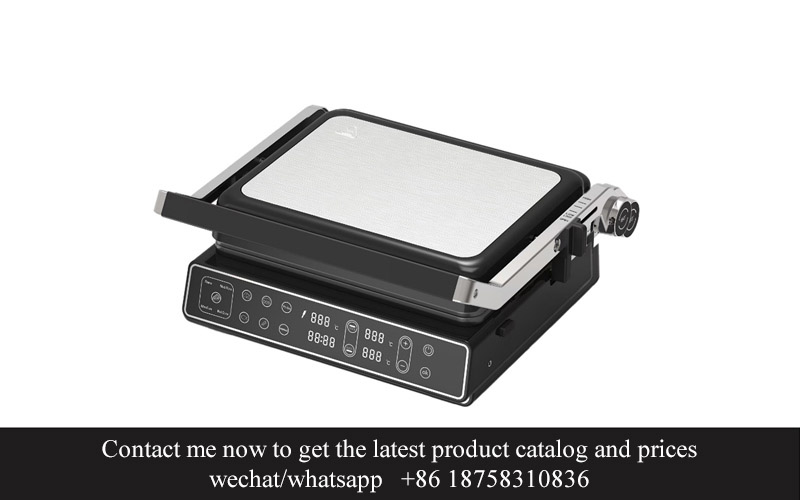
In the ever-evolving landscape of home appliances, the kitchen has become a hotbed for innovation. Modern homes are not just seeking functionality but also a touch of sophistication and technology. Here are some unique ideas that are reshaping the kitchen appliance market:
Smart IntegrationModern kitchens are no longer just about cooking; they’re about smart living. Appliances that can be controlled via smartphones or voice assistants are becoming increasingly popular. Imagine a fridge that not only keeps your food fresh but also suggests recipes based on its contents or a stove that adjusts its temperature with the touch of a button on your tablet. Smart integration is not just about convenience; it’s about creating a seamless and interactive kitchen experience.
Eco-Friendly DesignsWith environmental concerns on the rise, eco-friendly kitchen appliances are gaining traction. These include energy-efficient dishwashers that use less water and electricity, induction cooktops that reduce heat loss, and solar-powered kitchen gadgets. The emphasis is on reducing the carbon footprint while still providing the same, if not better, performance as traditional appliances.
Sustainability in MaterialsThe materials used in kitchen appliances are also undergoing a transformation. Biodegradable plastics, recycled metals, and sustainable woods are being used to create appliances that are not only durable but also environmentally responsible. This shift towards sustainability is not just a trend; it’s a commitment to a greener future.
Interactive Cooking AssistantsGone are the days when cooking was a solo endeavor. Interactive cooking assistants, such as AI-powered countertop devices, are now available to guide users through recipes, suggest ingredient substitutions, and even monitor cooking times and temperatures. These devices can be a game-changer for novices and a helpful tool for seasoned chefs looking to experiment with new dishes.
Multi-Functional AppliancesSpace is often a premium in modern homes, so kitchen appliances that do more than one job are becoming a necessity. For instance, a countertop oven that can bake, broil, and even serve as a toaster oven is not just space-saving but also versatile. Similarly, a single appliance that can juice, blend, and grind is perfect for those who want to streamline their kitchen counter.
Personalized Cooking ExperiencesTechnology is making it possible to tailor cooking experiences to individual preferences. Appliances that can be customized with different settings and features based on user profiles are becoming popular. This could mean a coffee machine that knows your preferred strength or a blender that adjusts its speed based on the consistency you desire.
Health and Wellness FeaturesAs health consciousness grows, kitchen appliances are incorporating features that promote wellness. For example, steam ovens that use less fat than traditional cooking methods, air fryers that offer a healthier alternative to deep-frying, and water filters that provide clean, filtered water for drinking and cooking. These features are not just about convenience but about ensuring that the food prepared is as healthy as possible.
Safety FirstSafety has always been a priority in kitchen appliances, but new innovations are taking it to the next level. Appliances with built-in safety features like automatic shut-offs, child locks, and smart sensors that prevent overcooking are becoming standard. These features not only protect users but also give peace of mind to those who are concerned about kitchen safety.
In conclusion, the kitchen appliance market is buzzing with creativity and innovation. From smart integration to eco-friendly designs, these unique ideas are not just making cooking easier and more enjoyable but are also contributing to a more sustainable and health-conscious lifestyle. As technology continues to advance, we can expect even more groundbreaking concepts to hit the shelves, transforming the way we interact with our kitchens.

In the ever-evolving landscape of e-commerce, kitchen appliance suppliers are discovering a revolutionary approach that’s reshaping their business models. This innovative method is known as dropshipping, and it’s turning the traditional supply chain on its head. Let’s delve into why dropshipping is a game-changer for these suppliers.
The Elimination of Inventory PainsOne of the biggest hurdles for kitchen appliance suppliers is managing inventory. With the advent of dropshipping, suppliers can bid farewell to the stress of stockpiling. Instead of purchasing products in bulk and hoping they sell, they only order items when a customer places an order. This not only reduces the risk of overstocking but also frees up capital that can be used for other business investments.
Enhanced Flexibility in Product OfferingsKitchen appliance markets are dynamic, with new products and features emerging regularly. Dropshipping allows suppliers to quickly adapt to these changes without the need to invest in inventory for each new item. They can showcase a wide range of products without the financial commitment, giving customers more options and ensuring they stay competitive.
Reduced Financial RiskWhen it comes to launching a new kitchen appliance, the potential for financial loss can be significant. With dropshipping, suppliers can test the market with minimal risk. They can introduce new products and see how they perform without tying up a lot of capital. If a product doesn’t resonate with customers, the supplier hasn’t incurred the cost of manufacturing and storing a large number of units.
Global Market AccessDropshipping opens up a world of opportunities for kitchen appliance suppliers. They can reach customers anywhere in the world without the need for a physical presence in those locations. This global reach expands their customer base exponentially, allowing them to tap into markets that were previously inaccessible.
Streamlined Order FulfillmentThe traditional model of kitchen appliance sales involves suppliers handling orders, packaging, and shipping. Dropshipping takes this burden off the supplier’s shoulders. Instead, they rely on a third-party supplier to handle the logistics. This means suppliers can focus on marketing and customer service, while the actual fulfillment process is taken care of by someone else, often at a lower cost.
Increased Focus on Customer ExperienceWith the complexities of inventory management and order fulfillment outsourced, kitchen appliance suppliers can concentrate on what they do best: providing exceptional customer experiences. They can tailor their services to meet customer needs, offer personalized recommendations, and build long-lasting relationships without the distractions of operational logistics.
Reduced Barriers to EntryThe initial investment required to start a kitchen appliance business can be substantial. Dropshipping lowers this barrier by eliminating the need for large upfront inventory costs. As a result, aspiring entrepreneurs and small businesses can enter the market more easily, leading to increased competition and innovation.
Cost Savings and ScalabilityDropshipping can significantly reduce overhead costs. Since suppliers don’t need to maintain a warehouse or handle shipping, they can save on storage fees, packaging materials, and logistics. This cost-effectiveness also allows for easy scalability. Suppliers can grow their business quickly by simply increasing the number of orders they pass on to their dropshipping partners.
Enhanced TransparencyIn the world of dropshipping, suppliers have a clearer picture of their sales data. They can see which products are selling well and which are not, without the distortions that come with holding inventory. This transparency helps in making informed decisions about what to stock and market next.
By leveraging the power of dropshipping, kitchen appliance suppliers can transform their business operations. They can offer a wider variety of products, reduce financial risks, and focus on customer satisfaction. As the e-commerce landscape continues to evolve, dropshipping is proving to be a pivotal strategy for those looking to thrive in this competitive industry.
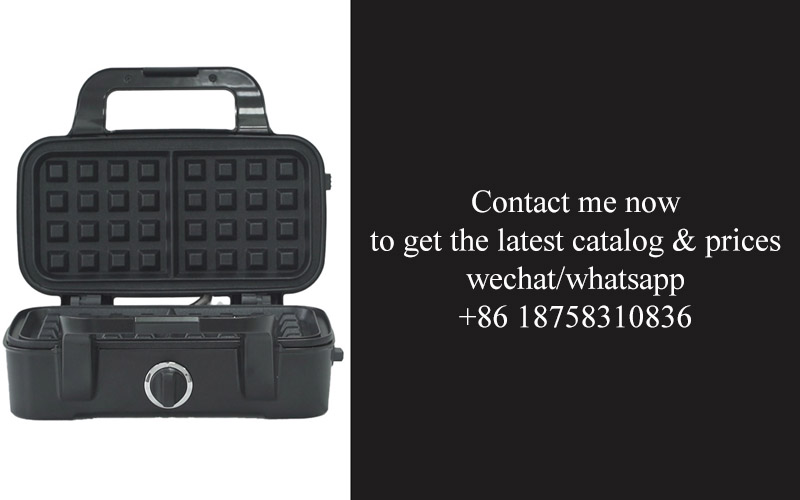
Navigating the vast online market for kitchen appliances, it’s clear that dropshipping has emerged as a transformative model for suppliers. This approach allows businesses to offer a wide range of products without the need for extensive inventory or storage space. Here’s how to find the perfect dropshipping supplier on platforms like Lazada and Shopee.
Understanding the Platform DynamicsTo begin, it’s crucial to understand the unique features and user base of Lazada and Shopee. Lazada, for instance, is a popular e-commerce platform in Southeast Asia, while Shopee has a strong presence in the region and beyond. Both platforms offer a variety of tools and resources for suppliers to showcase their products, but they also have different market trends and customer preferences.
Researching Potential SuppliersOnce you’ve familiarized yourself with the platform, the next step is to research potential suppliers. Look for suppliers who have a good reputation and a track record of reliable service. Check their product listings for clear images, detailed descriptions, and customer reviews. This initial research will help you narrow down your options to the most promising candidates.
Evaluating Product QualityProduct quality is paramount in the kitchen appliance industry. When considering a supplier, don’t just rely on their product listings. Reach out to them directly to inquire about the quality control processes they have in place. Ask about certifications, materials used, and warranty policies. A supplier who is transparent about their quality standards is likely to be more reliable.
Assessing Pricing and Profit MarginsPricing is a critical factor in dropshipping. You need to ensure that the products you’re selling are priced competitively while still allowing you to make a profit. Compare the prices of similar products from different suppliers to get a sense of the market rate. Additionally, consider the cost of shipping and any other fees that might affect your bottom line.
Checking for Responsive Customer ServiceCustomer service is key in the dropshipping model, as you won’t be handling returns or exchanges directly. Look for suppliers who offer responsive customer service. Check their response times on the platform and read through any feedback from other sellers. A supplier that is quick to address issues and willing to work through problems is worth considering.
Reviewing Order Fulfillment ProcessThe efficiency of the order fulfillment process can greatly impact your business. Find out how long it takes for the supplier to process and ship orders. Look for suppliers who offer tracking information and have a reputation for timely delivery. A streamlined fulfillment process can help you maintain high customer satisfaction rates.
Understanding Return PoliciesReturns are a common occurrence in e-commerce, so it’s important to understand the supplier’s return policy. A supplier with a clear and fair return policy can save you from potential headaches down the line. Make sure they have a process in place for handling returns and that they’re willing to work with you to resolve any issues.
Building Relationships with SuppliersOnce you’ve found a supplier that meets your criteria, it’s time to build a relationship. Regular communication can help ensure a smooth partnership. Keep the lines of communication open and be proactive in addressing any concerns that may arise. A good relationship with your supplier can lead to better terms, more support, and ultimately, a more successful business.
Monitoring Performance and FeedbackAfter you’ve started working with a supplier, it’s essential to monitor their performance. Keep an eye on customer feedback and order fulfillment times. If you notice any issues, address them promptly with the supplier. Positive feedback and consistent performance are indicators that you’ve found a reliable partner.
Expanding Your Product RangeAs you grow comfortable with your supplier, consider expanding your product range. A good supplier may offer a diverse selection of kitchen appliances that can help you cater to a wider audience. This can lead to increased sales and a stronger presence on Lazada and Shopee.
Remember, finding the right dropshipping supplier on Lazada and Shopee is about more than just selecting a product. It’s about building a partnership that can support your business’s growth and success. Take the time to thoroughly research and evaluate potential suppliers, and you’ll be well on your way to a thriving online kitchen appliance business.
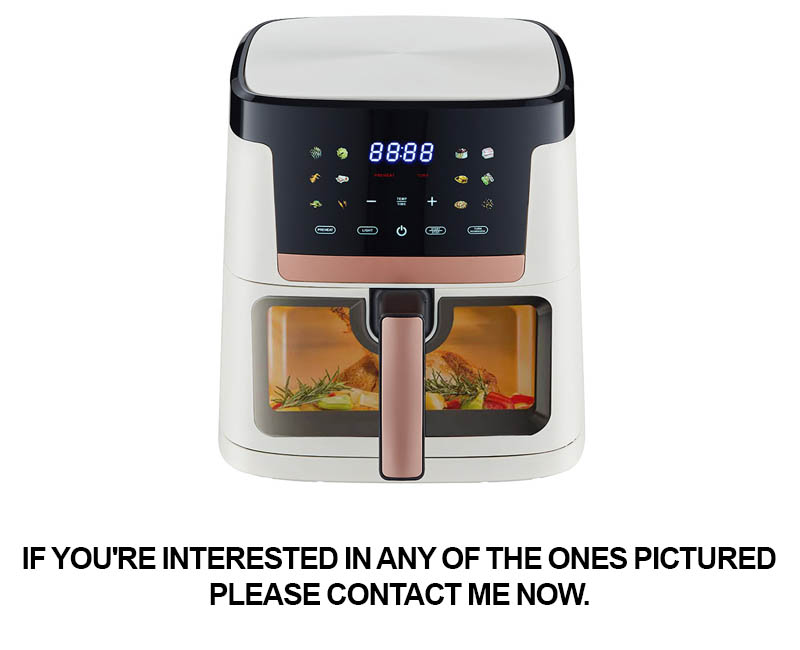
In the world of e-commerce, finding a reliable dropshipping supplier is akin to discovering a treasure chest of opportunities. Here are some crucial features to consider when hunting for the perfect partner for your kitchen appliance business on platforms like Lazada and Shopee.
Product Quality and VarietyA top-notch dropshipping supplier should offer a wide range of high-quality kitchen appliances. Look for suppliers that provide detailed product descriptions, high-resolution images, and customer reviews to ensure the products meet your standards and those of your customers.
Fast and Reliable ShippingTime is of the essence in e-commerce. A reliable supplier must offer fast shipping options that are both cost-effective and trackable. This ensures that your customers receive their orders promptly, reducing the risk of negative feedback and increasing customer satisfaction.
Competitive PricingWhile it’s important to offer competitive prices to attract customers, you also need to ensure that the supplier’s pricing is fair and allows you to maintain a healthy profit margin. Compare prices with other suppliers and consider bulk order discounts or long-term partnerships that could lower costs.
Responsive Customer ServiceCustomer service is the backbone of any successful business. A reliable supplier should have a team that is responsive to inquiries, quick to resolve issues, and willing to help with any challenges that may arise. This includes handling returns and exchanges efficiently.
Secure Payment OptionsSecurity is a major concern for both you and your customers. Ensure that the supplier offers secure payment methods that protect sensitive information. Look for suppliers that use SSL encryption and offer multiple payment gateways to cater to different customer preferences.
Clear CommunicationEffective communication is key to a successful partnership. A supplier should provide clear and concise information about their products, policies, and procedures. Regular updates on inventory levels, order processing times, and shipping details are essential for maintaining a smooth operation.
Strong Online PresenceA reputable supplier should have a strong online presence, including a well-maintained website or online store. This indicates that they are serious about their business and are committed to providing a professional service.
Customization and Branding OpportunitiesIf you’re looking to establish your brand, a supplier that offers customization options is a valuable asset. This could include branded packaging, custom labels, or even private labeling for your products.
Inventory ManagementA reliable supplier should have a robust inventory management system that ensures products are always available. This reduces the risk of stockouts and the need for backorders, which can frustrate customers and harm your reputation.
Positive Reviews and ReputationBefore committing to a supplier, take the time to read reviews from other dropshippers. Look for consistent positive feedback regarding product quality, shipping, and customer service. A good reputation can be a strong indicator of a supplier’s reliability.
Compliance with RegulationsEnsure that the supplier complies with all relevant regulations, including those related to product safety and import/export laws. This protects both you and your customers from legal issues and ensures that your business operates ethically.
Flexible Order MinimumsSome suppliers may require a minimum order quantity, which can be a barrier for small businesses or those just starting out. Look for suppliers with flexible order minimums or the option to purchase products individually to accommodate your business needs.
Training and SupportA reliable supplier should offer training and support to help you understand how to list products effectively, manage orders, and handle customer inquiries. This can be invaluable, especially if you’re new to dropshipping.
Long-Term Partnership PotentialConsider whether the supplier is open to building a long-term partnership. This can lead to better terms, exclusive deals, and a more integrated supply chain, which can be beneficial for both parties in the long run.
By focusing on these key features, you can find a dropshipping supplier that aligns with your business goals and helps you build a successful online kitchen appliance store on platforms like Lazada and Shopee.
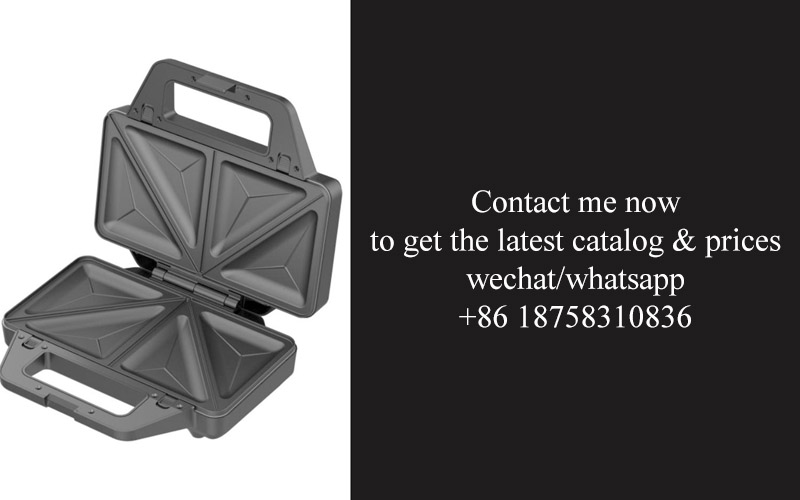
In the ever-evolving e-commerce landscape, Lazada and Shopee have become powerhouses, not just in Southeast Asia but globally. For suppliers of kitchen appliances, these platforms have opened doors to new markets and opportunities. Let’s delve into some success stories that showcase how suppliers are flourishing with Lazada and Shopee.
A small startup specializing in eco-friendly kitchen gadgets found its niche on Lazada. Their innovative line of solar-powered kitchen tools quickly caught the eye of eco-conscious consumers. The brand’s success can be attributed to their strategic use of social media marketing, which led to a surge in sales and a loyal customer base.
Shopee has been a game-changer for a supplier of smart kitchen appliances. By leveraging the platform’s user-friendly interface and extensive reach, they were able to showcase their high-tech products to a broader audience. Their smart oven, which can be controlled via a smartphone app, became a hot item, thanks to targeted promotions and collaborations with influencers.
One supplier of traditional kitchenware turned to Lazada to expand their market. They focused on high-quality, handcrafted items that were unique to their region. By highlighting the cultural significance and craftsmanship of their products, they were able to attract customers who appreciated the blend of tradition and modernity.
A global brand of kitchen appliances saw a significant boost in sales after partnering with Shopee. They used the platform to offer exclusive deals and discounts, which enticed customers to make purchases. The brand’s strong online presence and customer service on Shopee helped in building trust and fostering long-term relationships with buyers.
A local supplier of kitchen utensils found a new market for their products on Lazada. They were able to tap into the platform’s vast customer base by offering competitive pricing and fast shipping options. Their success story is a testament to the power of online marketplaces in connecting small businesses with a global audience.
Shopee’s dynamic platform allowed a supplier of kitchen appliances to test new product lines. They introduced a line of air fryers that quickly gained popularity due to their unique features and competitive pricing. The supplier’s agility in adapting to market trends and customer preferences played a crucial role in their success.
A supplier of gourmet kitchen gadgets on Lazada noticed a trend towards healthier eating habits. They capitalized on this by introducing a range of kitchen tools designed to make cooking at home easier and more enjoyable. Their innovative products, such as a spiralizer and a juicer, became must-haves for health-conscious consumers.
A global kitchen appliance brand found a new partner in Shopee to reach customers in emerging markets. They focused on creating localized marketing campaigns that resonated with local tastes and preferences. This approach, combined with Shopee’s efficient logistics, helped the brand establish a strong presence in these regions.
A local supplier of kitchenware on Lazada discovered the power of community engagement. They organized cooking challenges and giveaways on social media, which not only increased brand visibility but also fostered a sense of community among their customers. This strategy led to a surge in sales and a dedicated following.
Shopee’s platform has been a launchpad for a supplier of unique kitchen decor items. By showcasing their products in visually appealing ways and offering personalized customer service, they were able to attract a niche market of interior design enthusiasts. Their success is a testament to the importance of aesthetics and customer experience in e-commerce.
A global brand of kitchen appliances turned to Lazada to launch a new line of eco-friendly products. They leveraged the platform’s environmental focus and engaged with eco-conscious consumers through targeted advertising. The brand’s commitment to sustainability resonated with buyers, leading to a strong sales performance.
In conclusion, the success stories of suppliers on Lazada and Shopee highlight the power of these platforms in connecting businesses with customers around the world. By focusing on innovation, customer engagement, and strategic marketing, suppliers have found new ways to thrive in the digital marketplace.

In the ever-evolving world of kitchen appliances, staying ahead of the curve is crucial for both manufacturers and consumers. Here’s a look at some of the latest trends that are heating up the market.
Smart IntegrationThe integration of kitchen appliances with smart home technology is becoming increasingly popular. From refrigerators that can be controlled via smartphone apps to cooktops that adjust heat levels based on recipe instructions, smart appliances are not just convenient but also offer a level of customization that was once unimaginable.
Energy EfficiencyWith rising energy costs and a growing environmental consciousness, energy-efficient kitchen appliances are in high demand. Consumers are looking for appliances that can save them money on their utility bills while also reducing their carbon footprint. Features like LED lighting, programmable settings, and eco-friendly materials are becoming more common.
Healthy Cooking OptionsAs health and wellness trends continue to rise, kitchen appliances that promote healthy cooking methods are gaining traction. Induction cooktops, which use electromagnetic fields to heat pots and pans directly, are popular for their even heat distribution and energy efficiency. Additionally, appliances that can help users make homemade baby food, grind grains, or brew coffee with less waste are becoming sought after.
Minimalist DesignAesthetics play a significant role in kitchen appliance purchasing decisions. Many consumers are drawn to minimalist designs that blend seamlessly into modern kitchen aesthetics. This includes sleek lines, neutral colors, and compact, space-saving appliances that don’t take up too much counter space.
Customization and PersonalizationCustomization is no longer just for cars and phones; it’s making its way into kitchen appliances too. Users are looking for appliances that can be tailored to their specific needs, whether it’s a refrigerator with customizable storage compartments or a coffee machine that can brew multiple types of coffee with a single touch.
SustainabilitySustainability is a key factor in the kitchen appliance market. Brands that use recycled materials, have a commitment to reducing waste, and offer appliances with a long lifespan are gaining favor. Consumers are not only looking for appliances that are eco-friendly but also those that are built to last.
Innovative FunctionalityAppliances that push the boundaries of traditional functionality are capturing the attention of tech-savvy consumers. For example, ovens that can simulate the perfect outdoor barbecue experience or dishwashers that can identify and clean different types of dishes with precision are examples of innovative thinking.
Interactive Cooking GuidesWith the rise of interactive technology, some kitchen appliances now come with built-in cooking guides and tutorials. These guides can help users master new recipes and cooking techniques, making them an attractive option for those looking to expand their culinary skills.
Voice Control and AIThe integration of voice control and artificial intelligence into kitchen appliances is another trend on the rise. From ovens that can be turned on and off with a simple command to coffee makers that can be programmed to start brewing at a specific time, these features are making kitchen appliances more accessible and user-friendly.
Eco-Friendly MaterialsThe use of eco-friendly materials in kitchen appliances is not just a trend; it’s a necessity for many consumers. From bamboo handles to stainless steel bodies, the demand for appliances that are not only functional but also environmentally responsible is growing.
In conclusion, the kitchen appliance market is witnessing a blend of technological advancements, environmental concerns, and aesthetic preferences. As these trends continue to shape the industry, both suppliers and consumers will need to stay informed to make the most of the latest innovations.

Understanding market trends and predicting success is a complex dance, especially in the dynamic world of kitchen appliances. Data analysis plays a pivotal role in this dance, offering insights that can guide businesses toward prosperity. Here’s a look at how data analysis shapes the future of market success in kitchen appliances:
Shopper Behavior PatternsOne of the most valuable tools data analysis provides is the ability to decipher consumer behavior. By analyzing purchasing patterns, brands can identify what drives their customers to choose one kitchen appliance over another. Are they looking for convenience, energy efficiency, or sleek design? Data reveals the nuances in customer preferences, allowing suppliers to tailor their product offerings accordingly.
Product Lifecycle AnalysisProducts don’t just sell themselves; they go through various stages of their lifecycle. Data analysis can track the popularity and sales of kitchen appliances from their introduction to their decline. This information is crucial for suppliers to understand when to invest in new products and when to phase out old ones. It also helps in predicting demand for upcoming seasons or special occasions.
Predictive Analytics for Inventory ManagementManaging inventory is a balancing act. Too much stock can tie up capital and lead to storage issues, while too little can result in missed sales. Data analysis can predict inventory needs by analyzing historical sales data, seasonality, and market trends. This ensures that suppliers can maintain the right balance of products on hand, reducing the risk of stockouts or overstocking.
Customer Sentiment AnalysisThe digital age has given rise to an abundance of customer feedback, from reviews on e-commerce platforms to social media posts. Data analysis can sift through this vast amount of information to gauge customer sentiment. Understanding whether customers are satisfied, dissatisfied, or indifferent to a particular kitchen appliance can guide suppliers in making improvements or addressing specific issues.
Market SegmentationNot all consumers are the same. Data analysis can segment the market based on demographics, psychographics, and purchasing behavior. This allows suppliers to target their marketing and product development efforts more effectively. For instance, one segment might value eco-friendly appliances, while another may prioritize smart technology integration.
Competitor BenchmarkingData analysis also helps in keeping a pulse on the competition. By analyzing competitor’s product offerings, pricing strategies, and promotional activities, suppliers can gain a competitive edge. This can lead to more strategic pricing, innovative product features, or unique marketing campaigns that resonate with consumers.
Trend ForecastingThe kitchen appliance industry is influenced by broader trends, such as changes in diet, lifestyle, and technological advancements. Data analysis can forecast these trends and their impact on the market. For example, an increase in home cooking and baking might lead to a surge in demand for kitchen gadgets and mixers, prompting suppliers to adjust their inventory and marketing strategies.
Global Market InsightsWith the kitchen appliance market becoming increasingly global, data analysis can provide insights into international consumer preferences. This is particularly important for suppliers looking to expand their market reach. Understanding which products resonate in different regions can help tailor product lines for various markets.
Sustainability and Regulatory ComplianceSustainability is a growing concern for consumers and regulators alike. Data analysis can help suppliers stay ahead of regulatory changes and consumer demands by identifying sustainable practices and materials that are becoming more popular. This not only aligns with ethical consumer choices but can also be a differentiating factor in the market.
Consumer Insights Through Social ListeningSocial listening tools allow suppliers to monitor what consumers are saying about kitchen appliances on social media platforms. Data analysis can uncover emerging topics, concerns, or preferences that might not be immediately apparent. This can lead to the creation of new products or the improvement of existing ones to better meet consumer needs.
In conclusion, data analysis is a multifaceted tool that can guide kitchen appliance suppliers in making informed decisions. From understanding customer behavior to predicting market trends, data analysis is key to navigating the complexities of the market and achieving sustained success.
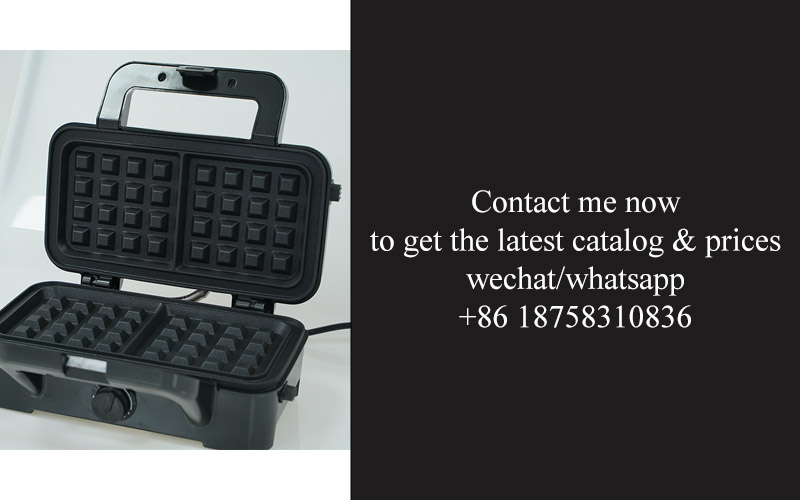
In the ever-evolving landscape of e-commerce, embracing the future of kitchen appliances means understanding the trends that shape consumer preferences and market dynamics. The rise of online platforms like Lazada and Shopee has opened new avenues for suppliers, allowing them to tap into a vast consumer base with minimal upfront investment. As we look ahead, the fusion of technology, innovation, and consumer insights will be the key to success in this dynamic sector. Here’s a glimpse into the future, highlighting the importance of adapting to changing times and leveraging the power of e-commerce.
The integration of smart technology in kitchen appliances has become a cornerstone of modern living. From smart ovens that can be controlled via smartphone apps to refrigerators that monitor food spoilage, innovation is driving the market forward. Consumers are increasingly seeking convenience and efficiency, and suppliers who can deliver these features are poised to thrive.
Personalization is another trend that’s gaining traction. Customizable kitchen appliances, such as induction cooktops with adjustable power levels or dishwashers with programmable cycles, cater to the diverse needs of different households. By offering products that can be tailored to individual preferences, suppliers can stand out in a crowded market.
Energy efficiency has become a major selling point, not just for environmental reasons but also for cost savings. Appliances that are Energy Star-rated or have similar certifications are more likely to appeal to eco-conscious consumers. Suppliers who prioritize energy-efficient designs are not only contributing to a greener planet but also to their bottom line.
The rise of health and wellness has spurred demand for kitchen appliances that make cooking and food preparation healthier. For example, air fryers and slow cookers have gained popularity as they offer healthier alternatives to deep-frying and fast cooking methods. Suppliers who can offer a range of health-conscious appliances are likely to see a boost in sales.
E-commerce platforms have transformed the way consumers shop for kitchen appliances. The ease of browsing, comparing prices, and reading reviews online has made it simpler for consumers to make informed purchases. Suppliers who leverage these platforms effectively can reach a wider audience and capitalize on the convenience factor.
Lazada and Shopee have become go-to destinations for online shopping, especially in Southeast Asia. Their user-friendly interfaces, extensive product catalogs, and robust logistics networks make them ideal for dropshipping suppliers. The ability to offer a wide range of products with minimal inventory risk is a significant advantage.
In the realm of customer service, suppliers who provide excellent support can differentiate themselves. This includes offering detailed product descriptions, responsive customer service, and hassle-free returns. A positive shopping experience can lead to repeat customers and increased brand loyalty.
Marketing and advertising strategies play a crucial role in the success of online kitchen appliance suppliers. Utilizing social media, influencer partnerships, and targeted advertising can help create buzz and drive traffic to product listings. Suppliers who stay on top of digital marketing trends are better positioned to capture the attention of potential buyers.
Sustainability is a growing concern, and suppliers who can offer sustainable and ethically sourced kitchen appliances are likely to appeal to a broader market. This includes considering the lifecycle of the product, from production to disposal, and ensuring that the materials used are environmentally friendly.
The future of kitchen appliances on e-commerce platforms will also involve a deeper integration with the Internet of Things (IoT). Appliances that can communicate with each other and with the user’s home automation system will become more common. Suppliers who can offer these interconnected solutions will be at the forefront of the market.
In conclusion, the future of kitchen appliances on e-commerce platforms is bright, but it requires suppliers to stay agile and adapt to the changing demands of consumers. By focusing on innovation, personalization, energy efficiency, health and wellness, excellent customer service, effective marketing, sustainability, and IoT integration, suppliers can not only thrive but also lead the way in shaping the future of the kitchen appliance industry.